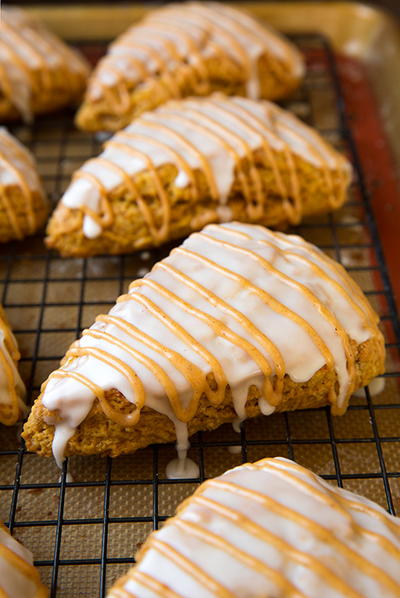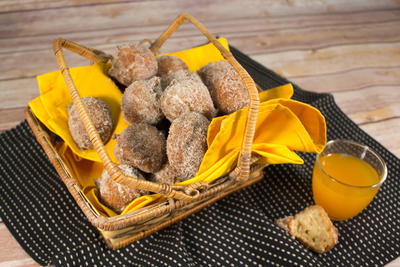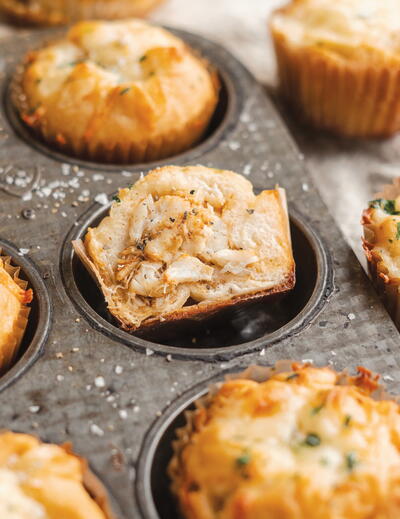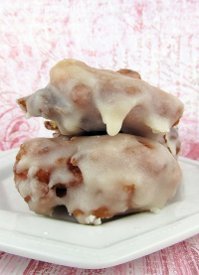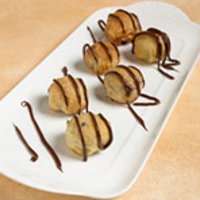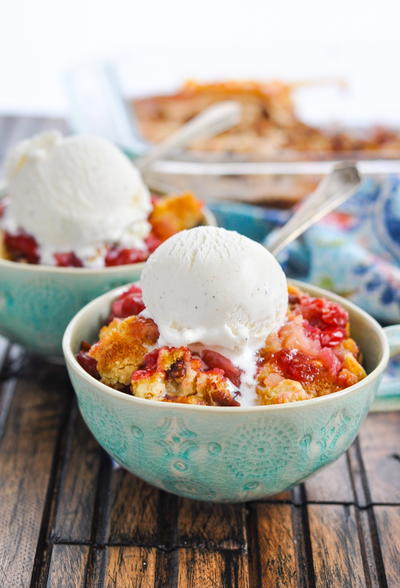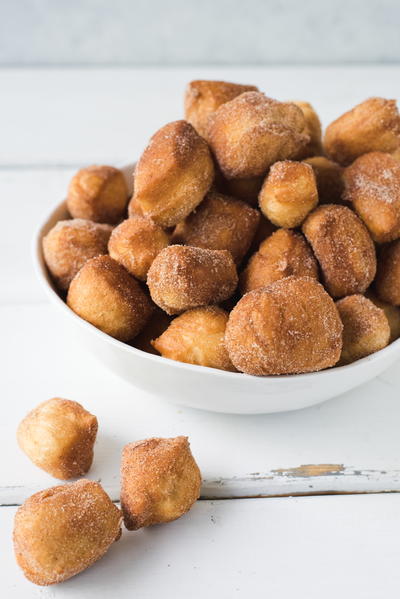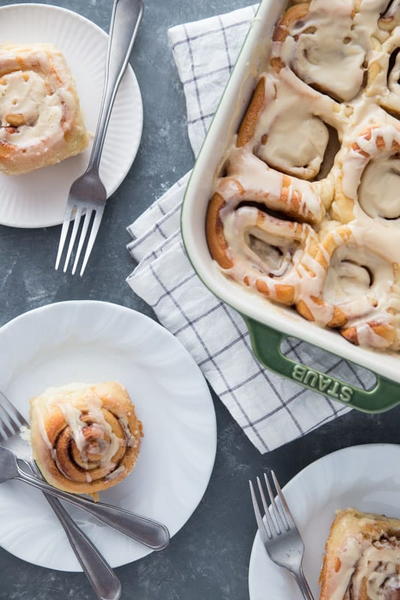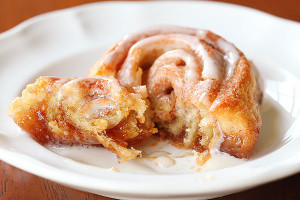Chocolate Custard Tart with Caramelized Condensed Milk
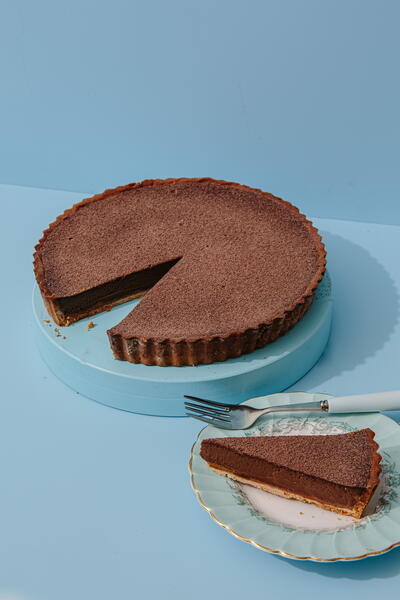
This heavenly chocolate tart is well worth the effort. Caramelized condensed milk, also known as dulce de leche, goes beautifully with the baked bitter chocolate filling. There is a refined elegance about dulce de leche desserts. They look divine and taste delicious. Dulce de leche is a caramelized reduction of milk and sugar, whereas caramel is a reduction of butter and sugar.
This impressive tart is sweet, gooey, bitter and a little salty. It is a truly indulgent dessert. This recipe will leave you with some leftover egg whites; don’t waste them. You can whip them into meringues for some extra treats.
Makes1 (one) 10-inch (25-cm) tart
Ingredients
- 7 oz (195 g) caramelized condensed milk
1 serving Chocolate Pastry Crust, blind baked- 1 2/3 cup (200 g) all-purpose flour
- 2/3 cup (150 g) butter
- 1/3 cup (70 g) caster sugar
- 2 tablespoons (14 g) cocoa powder
- 1/2 teaspoon salt
- 1 egg yolk
Custard Filling- 9 egg yolks
- 1/3 cup (75 g) raw sugar
- 2 cups (480 ml) thickened cream or heavy cream
- 7 (200 g) bittersweet (around 54%) chocolate, chopped into fine pieces
Directions
-
There are a couple of steps to be done the day prior for this recipe.
First, you will need to make your caramelized condensed milk. Place a tin of condensed milk in a saucepan, add water to cover by an inch or two (2.5 or 5 cm), bring to a boil and simmer for 3 hours. Check the water level periodically and add boiling water as needed to keep the tin submerged. When done, remove the tin with tongs, set it on a folded towel or a rack and allow it to cool thoroughly at room temperature or in the fridge before opening. Place the can in the fridge overnight to set. (Alternatively, dulce de leche is becoming increasingly popular in the supermarkets.)
Also, prepare your pastry.
-
Place the flour, butter, sugar, cocoa powder and salt in a food processor. (If you don’t have a food processor, you can use a stand mixer or even a bowl and a wooden spoon. Machines just make things easier.) Process these ingredients for a few seconds until the mixture resembles breadcrumbs. Add the egg yolk, and process it again until a dough is formed. Turn the dough out onto a lightly floured surface and knead it to form a round flat disk about 1 inch (2.5 cm) thick. Wrap the dough in cling wrap, then place it in the fridge to chill until it is firm, about 2 hours.
-
Remove the dough from the fridge. Oil a fluted tart tin lightly to ensure the shell does not stick. Lightly flour your work surface and a rolling pin. Work the dough with your hands for about three (really light) kneads to ensure the dough is pliable enough to roll. Carefully roll the dough, turning it every few rolls. This helps keep the pastry consistent in its thickness. Work carefully but quickly, as you do not want the butter in the dough to soften.
-
Once the pastry is about ⅛ inch (3 mm) thick, carefully roll it onto your rolling pin to transport it onto your tin. Unroll the pastry over the tin and lightly ease it into the edges of the tin, ensuring there are no pockets of air under the pastry or in the flutes. Using a sharp knife, trim the excess pastry from the rim. Chill the pastry in the freezer for about 30 minutes, or until it is firm. This will help prevent shrinkage.
-
When you’re ready to bake the tart shell, preheat the oven to 355°F (180°C). Scrunch and then unscrunch a sheet of baking paper and lay it over the bottom and up the sides of the pastry. Now fill it with baking weights or beans (uncooked), ensuring that they are firmly pushed into the corners. Place the pastry in the oven and bake it for 8 minutes. Remove the baking paper and weights, then bake for an additional 8 minutes. It will be difficult to see the doneness of this pastry, as it is already dark, but it should feel firm to the touch.
-
Leave the blind-baked tart shell in its baking tin. Ensure that it is stored in an airtight container away from any moisture.
-
The next day, position a rack in the middle of the oven and preheat to 265°F (130°C). To begin the custard filling, place the egg yolks and sugar in a bowl, then whisk until they begin to lighten in color. Place the cream in a small saucepan over medium heat and bring it to a simmer. Pour one-third of the heated cream onto the eggs, then quickly whisk it through. Add the remaining cream, whiskagain, then add the chocolate. The chocolate will melt from the heat in the cream. Cool the custard in the fridge until it thickens.
-
To fill the tart, give the dulce de leche a quick stir in the tin. This will loosen it for easier spreading. Spoon the dulce de leche over the base of the tart shell. Set the tart shell in its tin on a baking tray and place it in the oven. Pour the custard filling into the shell, then gently close the oven door.
-
Bake for 45 to 50 minutes, or until the custard is set with a very slight jiggle. Set the tart in the refrigerator until fully cooled before slicing.
Read NextChinese Donut Recipe


